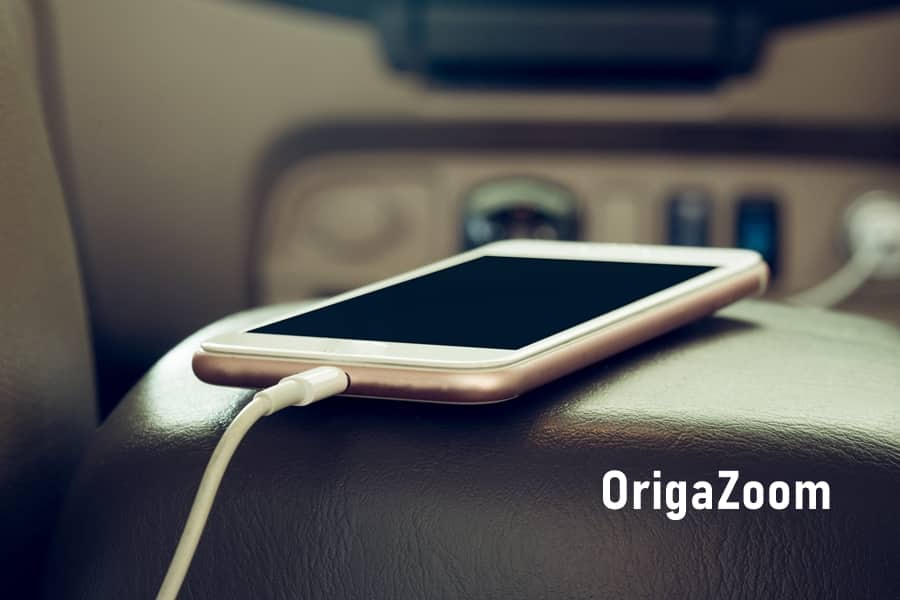You’ve done your spotting, identified your location to maximize your composition, all you have left to do is shoot your landscape photo. You have your finger on the trigger, ready to… minute butterfly, not so fast. Before shooting the panorama, it makes sense to ask the right questions. This will slow you down by a few minutes (it’s not forever, admit it), but I assure you that this moment of reflection will be most beneficial.
Your approach will be more rigorous, your choices better targeted, and you will return home with better results. Is not this a information worthy of interest? So here are 8 relevant questions to ask yourself before shooting your landscape photo.
QUESTION # 1: WHAT IS MY MAIN TOPIC?
A place can have several interesting elements to photograph. Perhaps your first intention is to want to include the whole landscape. On the other hand, if you overload your photo, you will dilute the impact of your visual message.
Analyze the scene and check where the interest of your composition lies. Is it in the sky with clouds nimbled with a soft light? Is it a ground level element?
Move as needed. If you are unsure, take various shots by varying your perspective. Take the trouble to go around the subject. Sometimes the sky is worth invading the frame, other times the elements on the floor are much more interesting.
You may also like - Samyang 35mm F/1.4 AS UMC for Nikon, Canon, Pentax, Samsung, Sony NX and 4/3.
QUESTION # 2: DO I NEED TO USE A TRIPOD?
If you engage in landscape photography in the middle of the afternoon, when the lighting is enough, you probably will not need a tripod.
On the other hand, if you take landscape photography early in the morning or late at the end of the day (or the light is less intense), you want to get a good depth of field (F/large figure) coupled with a low ISO (to increase the quality of your image), the tripod will be essential to get a clear photo.
Note: if the idea of having to carry (or manipulate) a tripod beats you, imagine your disappointment at the sight of blurred photos.
Take the habit of bringing it. Practice at home, in a stress-free environment, and learn how to handle it. Not knowing how to use a tripod is very frustrating. The more skillful you become to handle it, the more it will become an extension of yourself.
Warning: DO NOT forget to disable the stabilizer of your lens or case. Otherwise, you will have photos with a blur of moved, especially with a slow speed (more than 1 sec.).
You may also like - Best Lenses for Your Canon Camera.
QUESTION # 3: WHICH ISO SETTING TO CHOOSE?
If no element of the scene moves, no wind comes to shake the plants (flowers, wild herbs or branches), you do not need a very high shutter speed. Opt for the lowest ISO. You will preserve the quality of the details and avoid the noise generated in the shadows.
If wind is present (note that early in the morning, wind is often absent) and you want to freeze your scene, raise your ISO slightly for faster shutter speed. Also, you could compromise (have less depth of field) by opening your diaphragm more (ranging from f/16 to f/11, for example).
You may also like - What is the Best Nikon 18-105 Lens of 2020?
QUESTION 4: WHAT WHITE BALANCE?
If you shoot in RAW, you can leave the white balance in automatic mode, and when post-processing makes the necessary adjustments.
Personally, I find that it adds a shade of blue to the images, cooling the atmosphere. For a winter landscape without sun, this is consistent. It is already less so to represent a warm sunset.
I prefer to select the white balance that adapts to the light of the moment, this reduces the adjustments to be made during post-processing. This method is all the more important if you are shooting in JPEG, because the information stored in your case is minimized, leaving you little latitude to apply corrections.
So, for a sunny day, choose “daylight”, if the weather is cloudy opt for “shade”. The Kelvin (K) mode allows you to more finely adjust your white balance.
Tip 1: Use the Live View to check which one is suitable or take photo tests to determine the right choice.
Tip 2: For sunsets or sunrises select your white balance on “Shade”, you will get warmer colors.
You may also like - Sigma 18-35mm F/1.8 Art: Best Lens for Landscape Photography.
QUESTION # 5: WHICH APERTURE TO CHOOSE IN LANDSCAPE PHOTO?
In landscape photography, to obtain a sharp image from the first to the last plane, a small aperture is recommended (f/11 to F / 22). Be aware, however, that for the same aperture, you will naturally have more depth of field with a wide-angle (14 to 24 mm on full format / 10 to 20 mm on APS-C) than with a longer focal length (50 mm and more). To learn more about the notion of background blur, I recommend this article.
To check if all items are in focus (net), take a picture and zoom there to on the screen of your case. Or, if your device has Live View (on-screen view), use it to enlarge the image and check the sharpness of the scene. Make adjustments as needed.
However, you can decide to be creative and choose a shallow depth of field in order to evoke a sweet and mysterious atmosphere like the picture above.
You may also like - How to Use A Digital Camera?
QUESTION # 6: WHERE TO FOCUS?
Look at the site, do you have an overview? Do you want to have all the elements (foreground, middle and background) in the home? If so, focus on 1/3 of the image and, combining it with a small aperture (f/11-16), you will get a good depth of field. Use the Live View (shown on the screen) to perform the verification.
You could apply the hyperfocal technique (this is not my favorite method, but it is worth trying). This technique is often used by landscape photographers when it comes to including a very close element in their composition. There are plethora of online calculators and smartphone apps that will save you from getting into calculations in the middle of a photo shoot.
Here’s one. Choose your camera, cross the aperture with the focal length used and you will get the distance at which you need to focus to be clear of half that distance to Infinity. If your brain is overheating, the 1/3 image focus technique already works very well. 😉
You may also like - 7 Good Reason to Use A 35mm Fixed Focal Lens.
QUESTION # 7: SHOULD I USE A POLARIZER?
In landscape photography, know that a polarizing filter will enhance the colors, accentuate the blue of the sky and, interestingly, slightly reduce the dynamic range of a scene by decreasing the contrast in the highlights. So, to advocate days of blue sky where floats a colony of flaky clouds, rainy days (to eliminate reflections), or simply to enrich the saturation of colors.
You may also like - What is the Best Nikon Wide Angle Lens of 2020?
QUESTION # 8: DO I NEED TO ADJUST MY EXPOSURE?
Keep an eye on your histogram to see if you lose valuable information in the highlights. A histogram pasted on the right announces that the clearest parts of the image are overexposed. Result: you lose the information contained in these areas.
Tip: Turn on the display of the highlights in the menu of your case. In View mode, overexposed areas flash, telling you that you need to make patches. Underexpose by 0.5 or 1 EV (Exposure Value) / IL (Lumination Index) and check again.
If necessary, use a 3-stop gradient neutral filter to balance the brightness of the sky with that of the ground.
You may also like - How to Use A Selfie Stick?
CONCLUSION
You now have a reflection process to take your landscape photos to the next level. 8 simple questions that will ensure you bring the right information home. This process takes a few minutes of your time, but will save you a lot of time when processing and selecting your images. And by force of practice, these minutes will turn into seconds, and then become a reflex.


